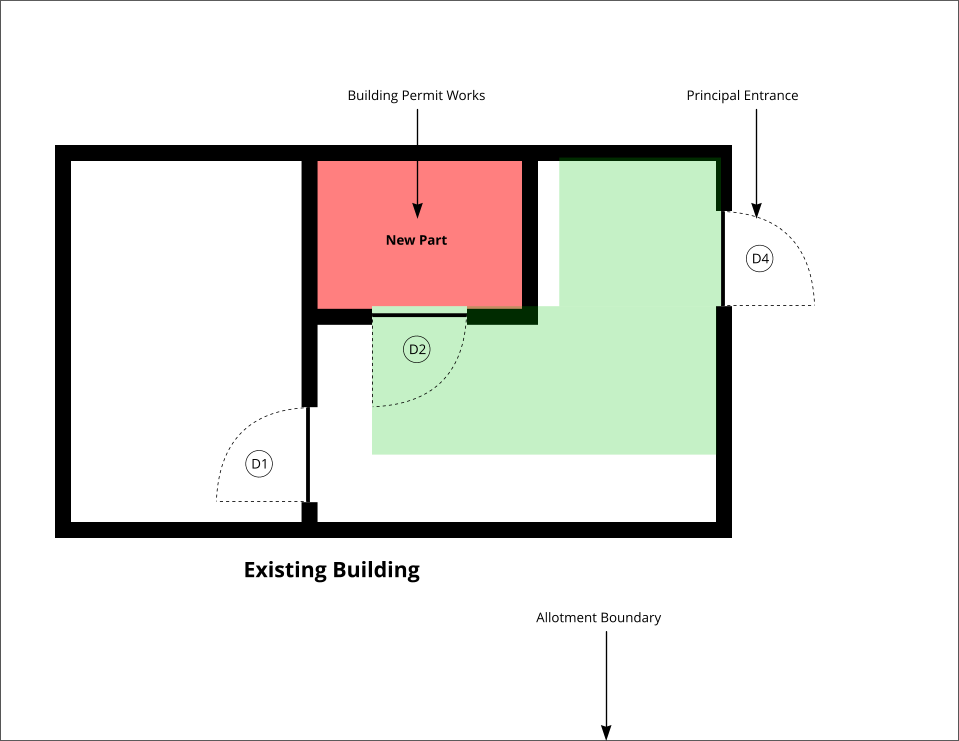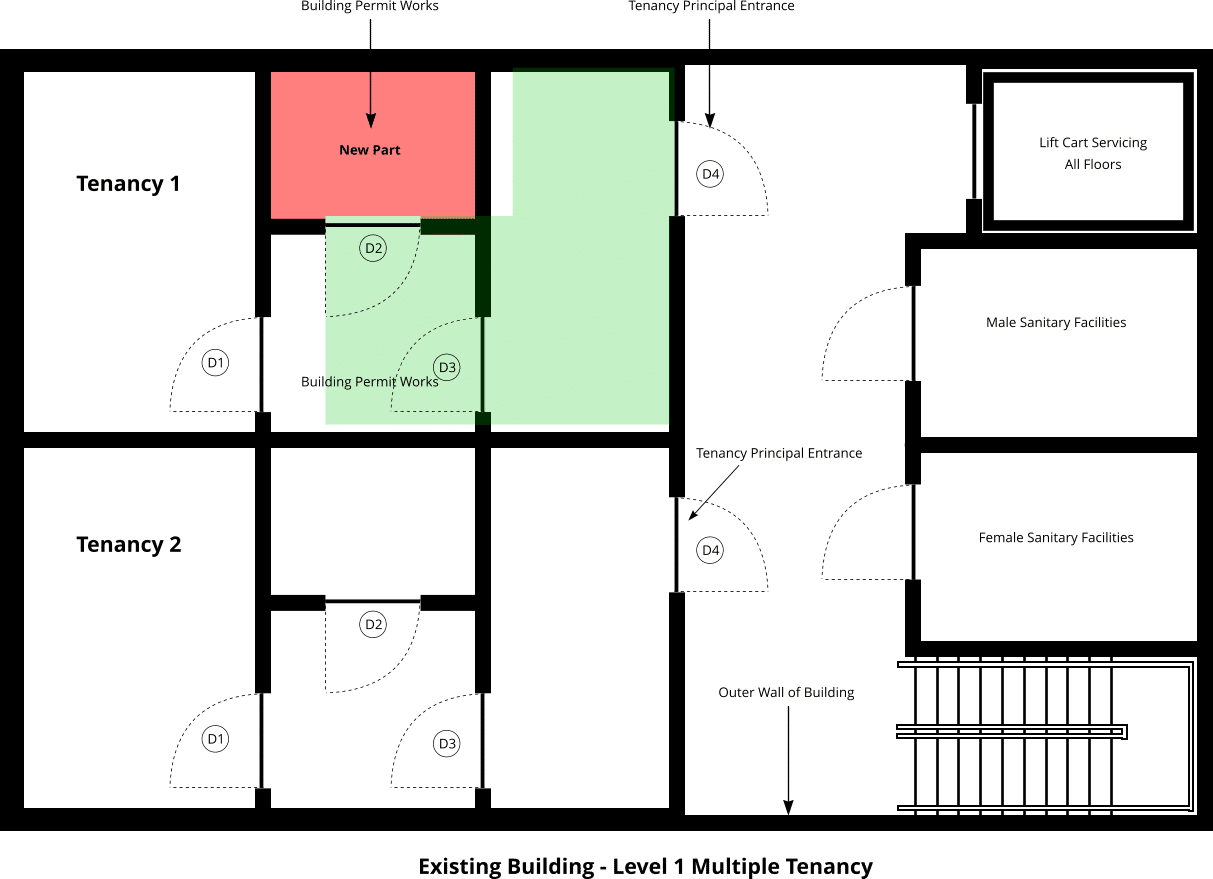
- To ensure the red area (New Part) complies and that there is a continuous accessible path of travel (Affected Part) to the principal entrance.
- The ‘affected part’ is to be compliant with the path of travel requirements. In this case both of the 90o turns would need to be 1500mm x 1500mm.
- There is no requirement to ensure the continuous accessible path of travel reaches the allotment boundary.
- D2 must meet minimum doorway requirements.

- To ensure the red area (New Part) complies and that there is a continuous accessible path of travel (Affected Part) to the principal entrance.
- The ‘affected part’ (green area) is to be compliant with the path of travel requirements. In this case D2 circulation spaces and the 90o turn of 1500mm x 1500mm to align with the principal entrance must be provided.
- There is no requirement to ensure the continuous accessible path of travel reaches the allotment boundary.
- D2 and D3 must meet minimum doorway requirements.

- To ensure the red area (New Part) complies and that there is a continuous accessible path of travel (Affected Part) to the principal entrance.
- The ‘affected part’ (green area) is to be compliant with the path of travel requirements. In this case D2 circulation spaces and the 90o turn of 1500mm x 1500mm to align with the principal entrance must be provided.
- There is no requirement to ensure the Lift, Stairway, Sanitary facilities or that the continuous accessible path of travel reaches the principal entrance to the building.
- D2 and D3 must meet minimum doorway requirements.
Compliance is NOT an option - Obtain a no obligation quote TODAY.
If there is anything that we can assist with – just ask.
Get In touch
Send an email or Call 1300 276 222
Key Services
Desktop Access Audits provide a comprehensive report and we work along side governments, design teams, owners, companies etc. to ensure disability access is provided and compliance is achieved.
Onsite Access Audits provide a comprehensive report and we work along side governments, design teams, owners, companies etc. to ensure disability access is provided and compliance is achieved.
A performance solution report is where a deemed to satisfy provision is not met and an alternative building solution is proposed. The performance solution report is to articulate how the building solution is equal to or greater than that of the minimum requirement.
More and more requests are being made of product suppliers to provide a disability access compliance certification. ASN specialises in these certifications for suitability and usability of mainstream products for people with disability.
A luminance contrast test is a calculation between two (2) surfaces Light Reflectance Values (LRV’s). This determines the percentage of difference and is used to confirm compliance or deem not compliant.
